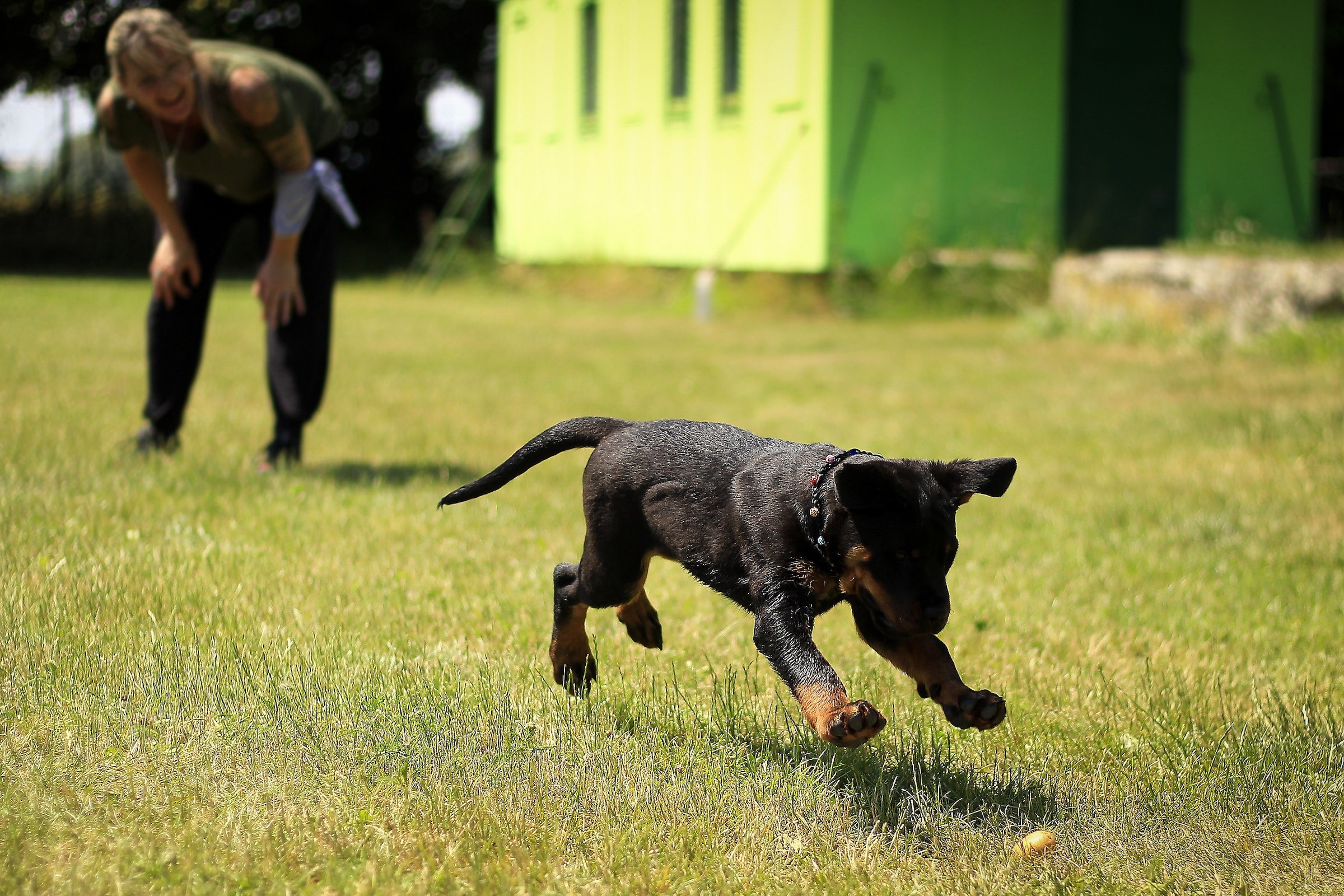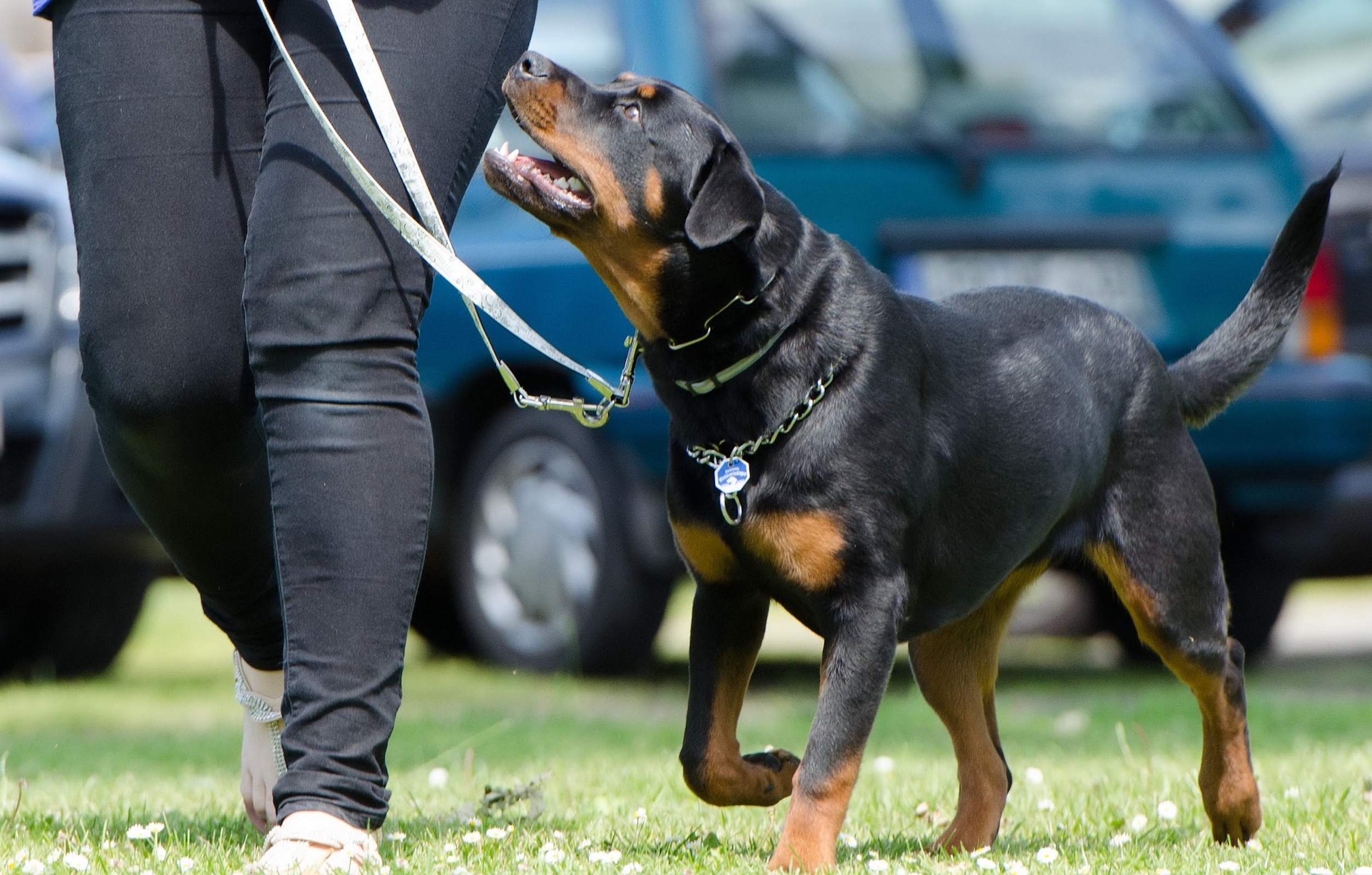When first training a dog, it can be tricky to know where to begin. Not every dog has the natural attention span to train or the instinct to please. Some respond better to reward-based approaches; others need a lot of TLC while they learn. But what should they learn first?
The best words to use for dog commands are short and heavy on consonants, which help get your dog’s attention — that’s why all the words on this list are only one syllable long. Plus, shorter commands mean your dog spends less time trying to understand and more time trying to complete the task. It’s a win-win!
Here is your essential dog-command words list — the perfect place to start.

Teach your dog “no”
When you first start thinking about training, safety should come first. It’s important for your pup to understand a correction during training and in everyday life, not only for her well-being but also for everyone around her — including you.
Even though you’re teaching a correction rather than a command, you can go about it the same way. Rewarding your pup for responding how you want her to when you tell her “no” will help her get the idea, even though it may look different each time you say it.
Teach your dog “sit”
Not only is “sit” another essential tool for safety, but it’s a perfect starting point for obedience training as well. Later commands like “stay,” “down,” and countless others will start as a “sit” since step-by-step training is easiest for dogs. It’s also one you’re bound to use frequently, especially if your dog likes to tag along while you run errands or hang out with friends.
Teach your dog “stay” or “wait”
Once your pup learns how to sit on command, you can practice “stay.” Some pet parents prefer to use “wait,” though either should work just fine. Whatever feels most natural!
Don’t set your expectations too high the first time you practice these steps. Most dogs won’t get it immediately, let alone be willing to sit and stay for an extended period. Start slow and work your way up. Make sure that your rewards for “sit” and “stay” are completely separate — you wouldn’t want your dog to get them confused! It’s best to reward your dog every time she performs the desired action within three seconds of doing it. It may seem fast, but it will help.
Teach your dog to come when called
Whether you approach this by beginning with responding to her name or by jumping into the command, every dog should learn to come eventually. It may be more effective in high-distraction situations and could be the difference between getting your dog’s attention and actually getting her to come to you.
First, reward her simply for looking your way when you start this command. Another way to teach this process is to show your dog a toy or treat, then use the “come” command as she approaches you. Don’t forget to reward her once she gets to you!

Teach your dog “down”
For this article’s purposes, “down” and “off” are two separate commands. “Off” might be used when your dog is jumping up to greet a guest, or when she’s getting comfy on the couch she knows she’s not allowed on. “Down” refers specifically to lying down with all legs on the floor, which is usually done from a seated position.
This is why starting with “sit” is so important! Your dog will have the confidence to know she can master commands, and she’ll already be halfway lying down. It won’t be too tricky to guide her down using a treat, toy, or hand — especially once she gets the hang of it the first few times.
Once you’ve mastered the few basic obedience commands every dog should know, you can move on to more advanced training — like leash training. Loose-leash walking is a great skill for any dog to have, especially one who may be living in a crowded city or one who loves to tag along on hikes. Your basic commands will help get your dog suited up for a walk, though many dogs act a little bonkers before they get used to using a leash. Don’t worry — just as with learning commands, you and your pup will work at it until practice makes perfect.
Editors' Recommendations
- 5 surefire ways to keep your dog off your bed and get a good night’s sleep
- Why does my dog have a bald patch on their tail? Here are the answers you need
- 7 dog training podcasts we’re obsessed with
- 4 effective ways to house-train your stubborn little Chihuahua
- Science says dogs cry tears of happiness when reunited with their humans




